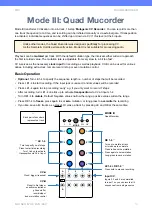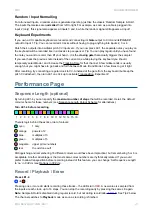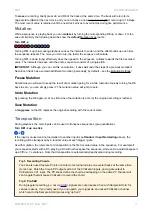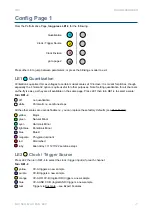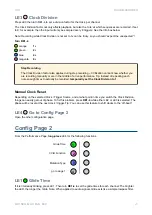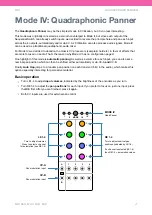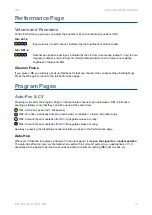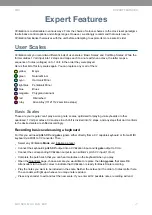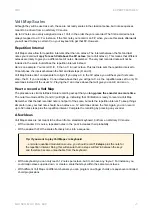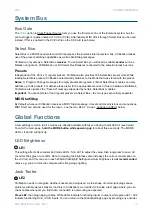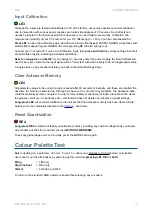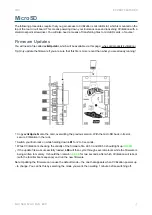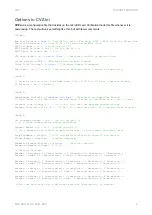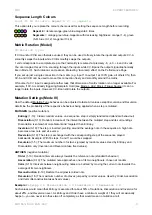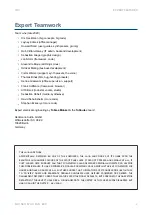
Sequence Length Colours
Count To
16
Colours =
Repeat 4
// or Segments
This option lets you replace the colour scheme used for setting the sequence length before recording:
Repeat 4
= iterate orange-green-blue-magenta 4 times
Segments
= orange-green-blue-magenta with decreasing brightness: orange (1-4), green
(5-8), blue (9-12), magenta (13-16)
Matrix Rotation (Mode I)
CV Rotation = yes
If CV-A and/or CV-B are otherwise unused, they can be used to freely rotate the inputs and outputs: CV-A
smoothly swaps the inputs while CV-B smoothly swaps the outputs.
1 volt corresponds to a complete step so that ‘normality is resumed’ at precisely -8, -4, 0, +4 and +8 volts.
You can imagine this as CV-A scanning through the inputs while CV-B pans the outputs (quadraphonically
like in Mode IV). Such rotation can create an interesting ‘lava lamp’ effect on the Performance Page.
If you set up just a single connection in the matrix (e.g. input 1 to output 1 at 100% gain, all others 0%) then
CV-A and CV-B can be used to move this connection freely and smoothly around the matrix.
Of course if a CV input is assigned another task, that dimension of matrix rotation is no longer available. For
example, if CV-A is already triggering Sample & Hold (see Mode I - LE2: Clock / Trigger Source) it can no
longer rotate the inputs. However, CV-B can still rotate the outputs.
Mutation Settings (Mode III)
How the default Mutation Type behaves can be adjusted to taste. All values except Excursion and Decursion
determine the probability of the respective behaviour being applied when a step is mutated.
MUTAGEN
(positive mutation)
Entropy
(1-10): Classic random values, one sequence step is simply randomized (standard behaviour)
Dissociation
(0-10): Random increase of the interval between the mutated step and its surroundings
Dissociation is somewhat more blatant and ‘targeted’ than Entropy.
Inversion
(0-10): The step is inverted, pivoting around the average note in the sequence. A high note
becomes a low note and vice versa.
Reversion
(0-10): The step is exchanged with the corresponding step of the sequence played
backwards. Example: With 16 steps, 5 and 11 would be swapped.
Excursion
(1-5): The maximum number of octaves jumped by random values. Used by Entropy and
Dissociation only (Inversion and Reversion take fixed values).
ANTIGEN
(negative mutation)
Order
(1-10): Random intervals, always towards the reference note (standard behaviour)
Association
(0-10): The mutated note approaches one of its two neighbours, chosen at random.
Calm
(0-10): Intervals between neighbouring notes are ‘calmed’ by moving the current note towards the
average of its two neighbours.
Reconstruction
(0-10): Restore the original recorded note
Decursion
(1-5) The maximum number of octaves jumped by random values. Used by Order, Association
and Calm (Reconstruction takes fixed values).
Example
:
Entropy = 6 Dissociation = 3 Inversion = 3 Reversion = 0
Such values would mean that
Entropy
is executed for about 50% of mutations,
Dissociation
and
Inversion
for
about 25%, and
Reversion
never. As
Entropy
and
Order
have a minimum weight of 1 they will occasionally
happen – you can never turn these two off completely, as that would mean no mutation at all.
33
Summary of Contents for CVilization
Page 1: ......

